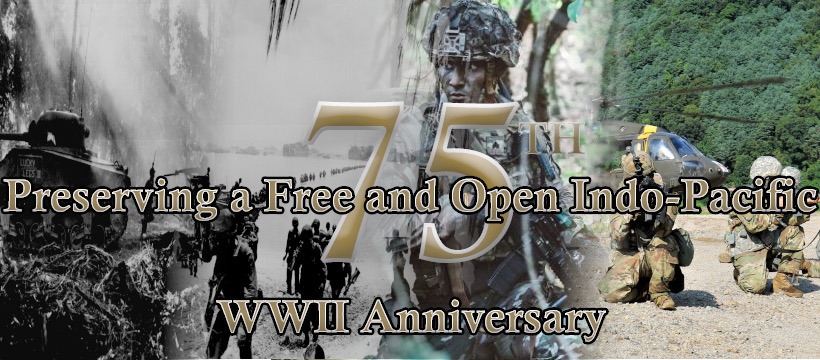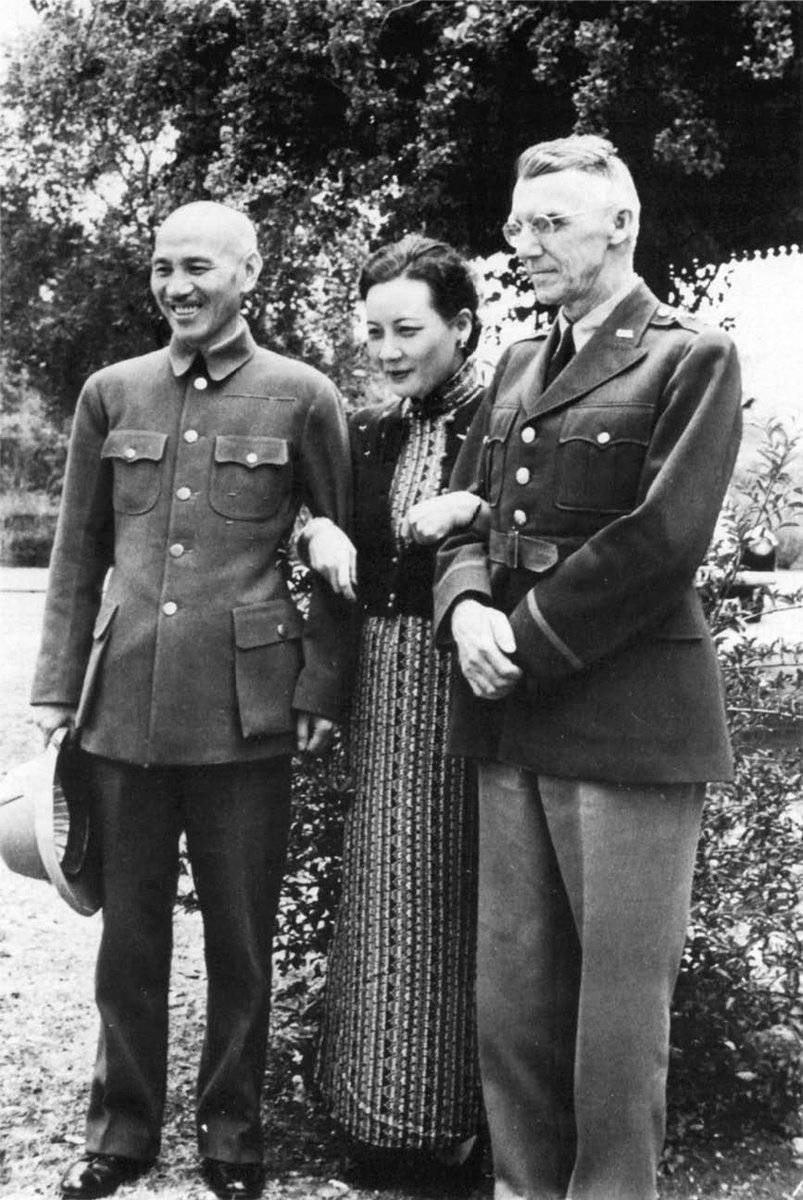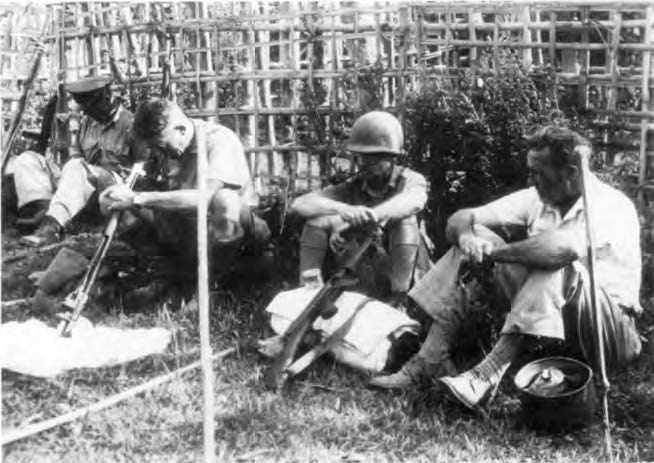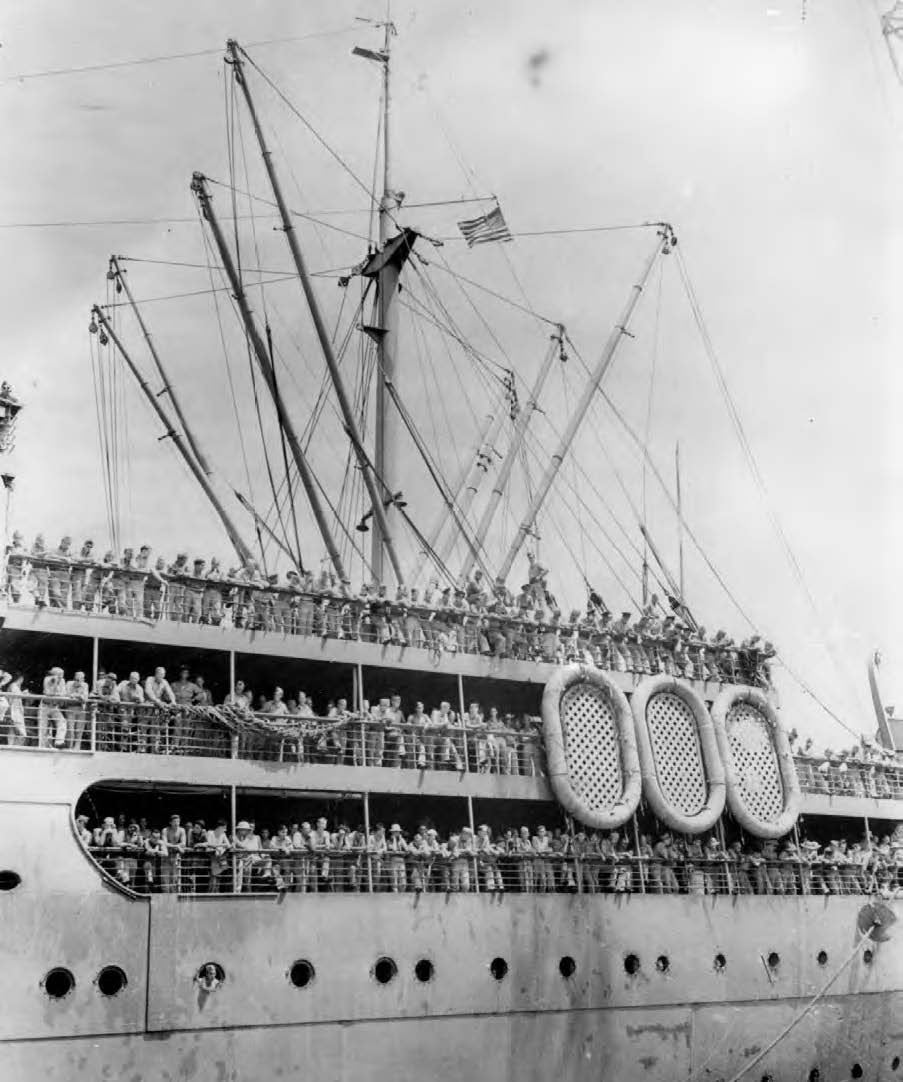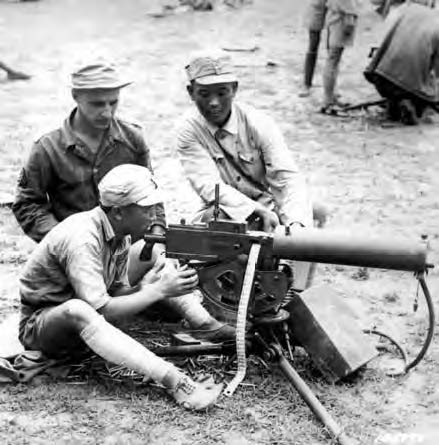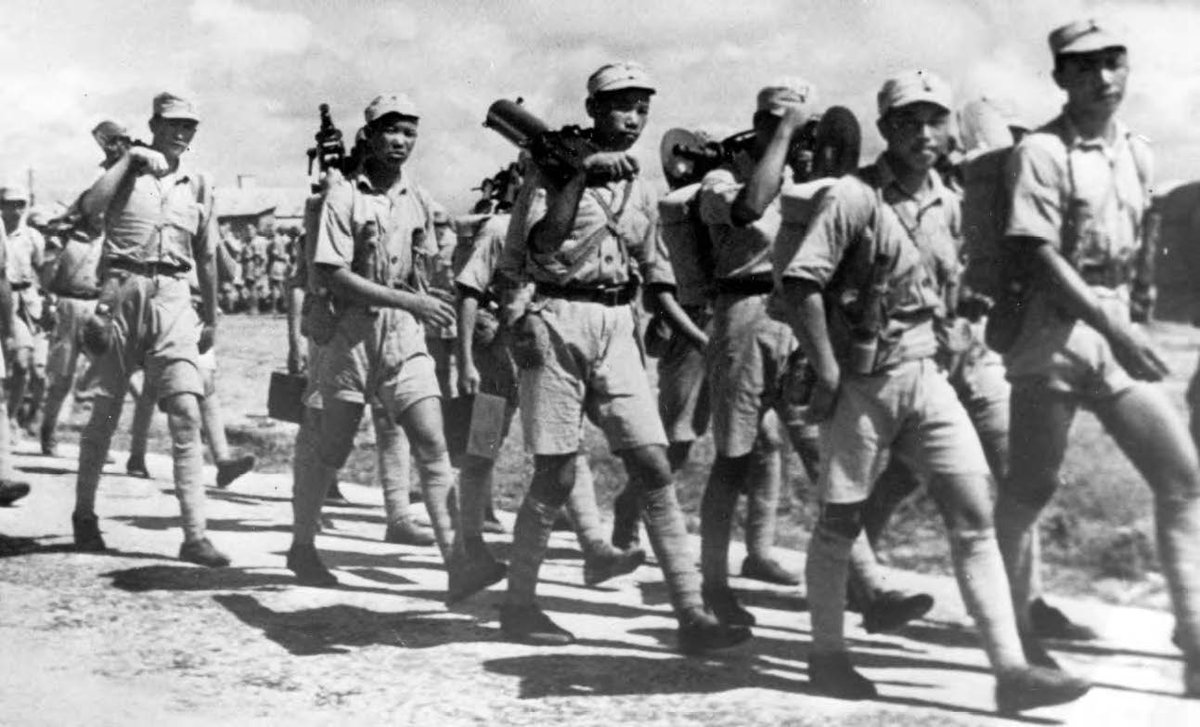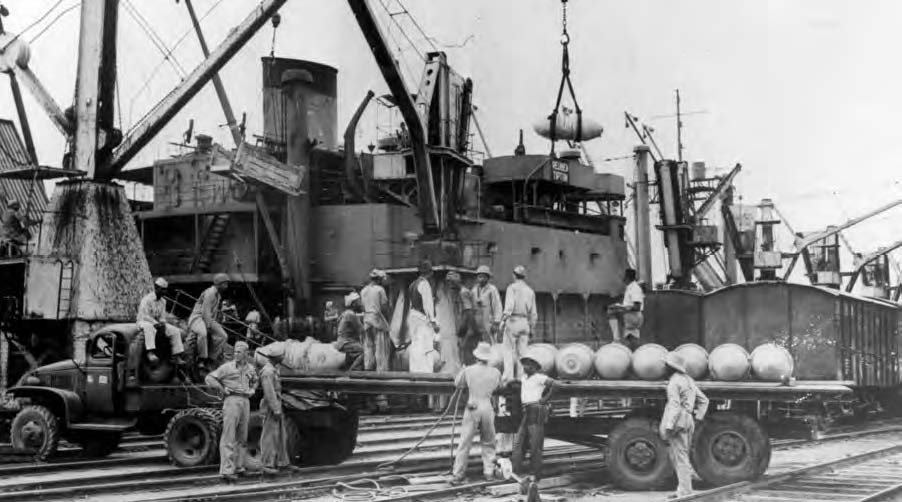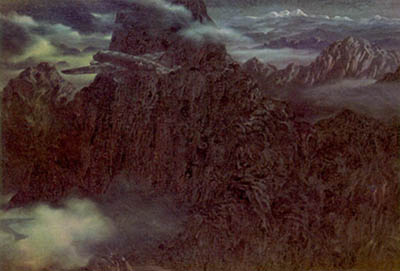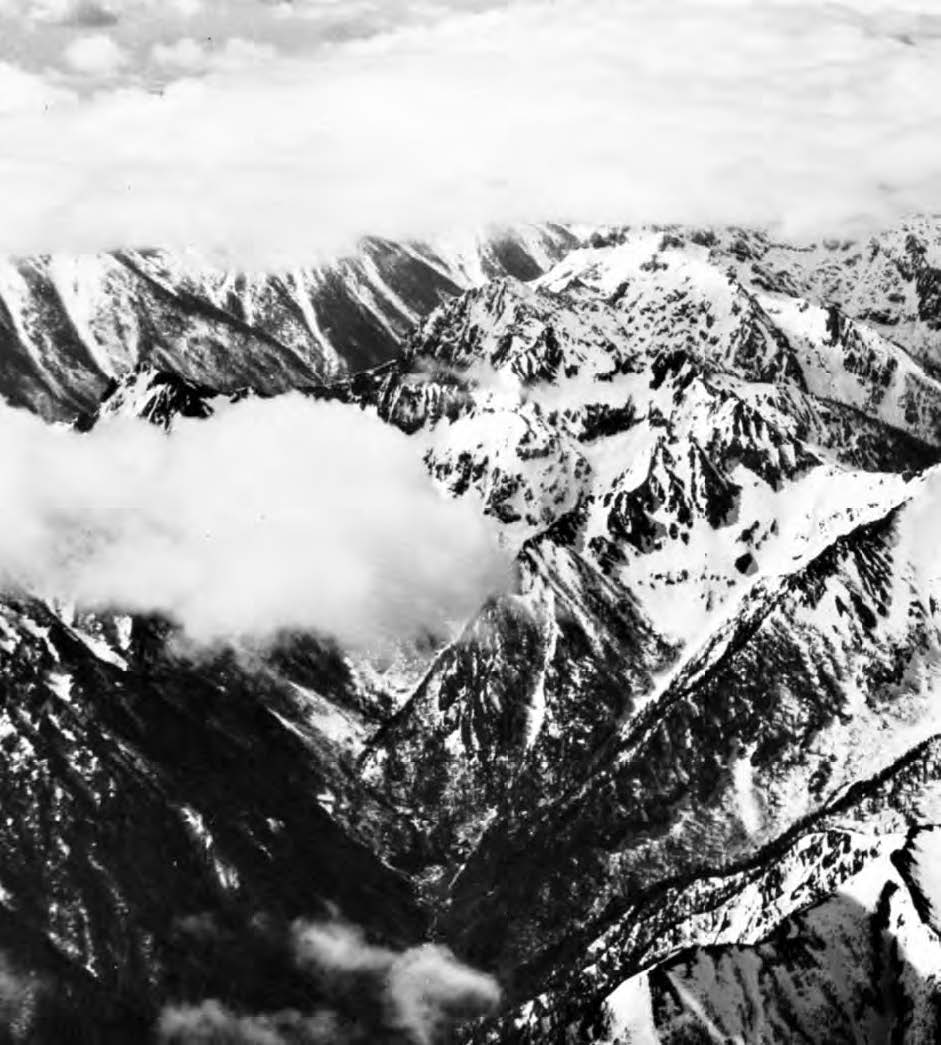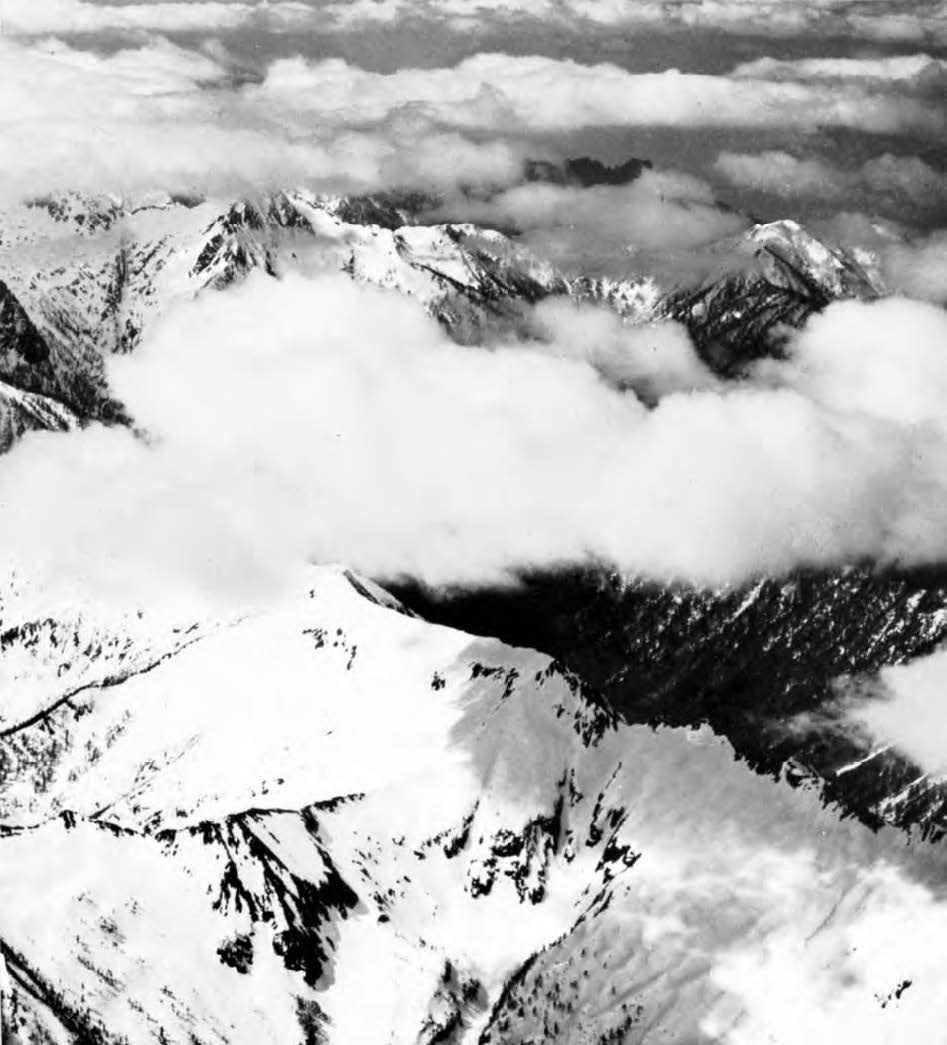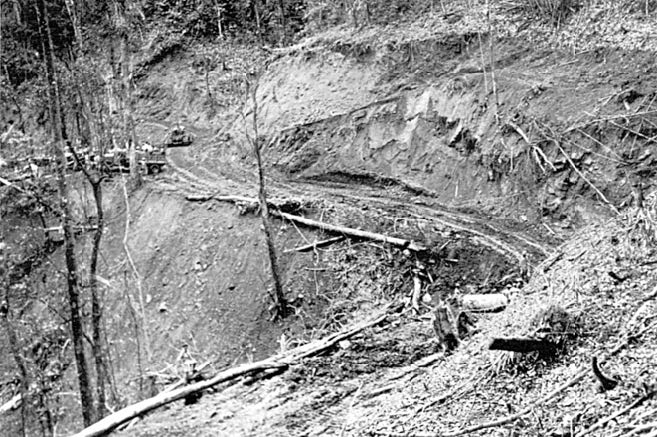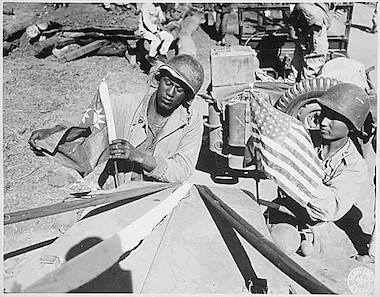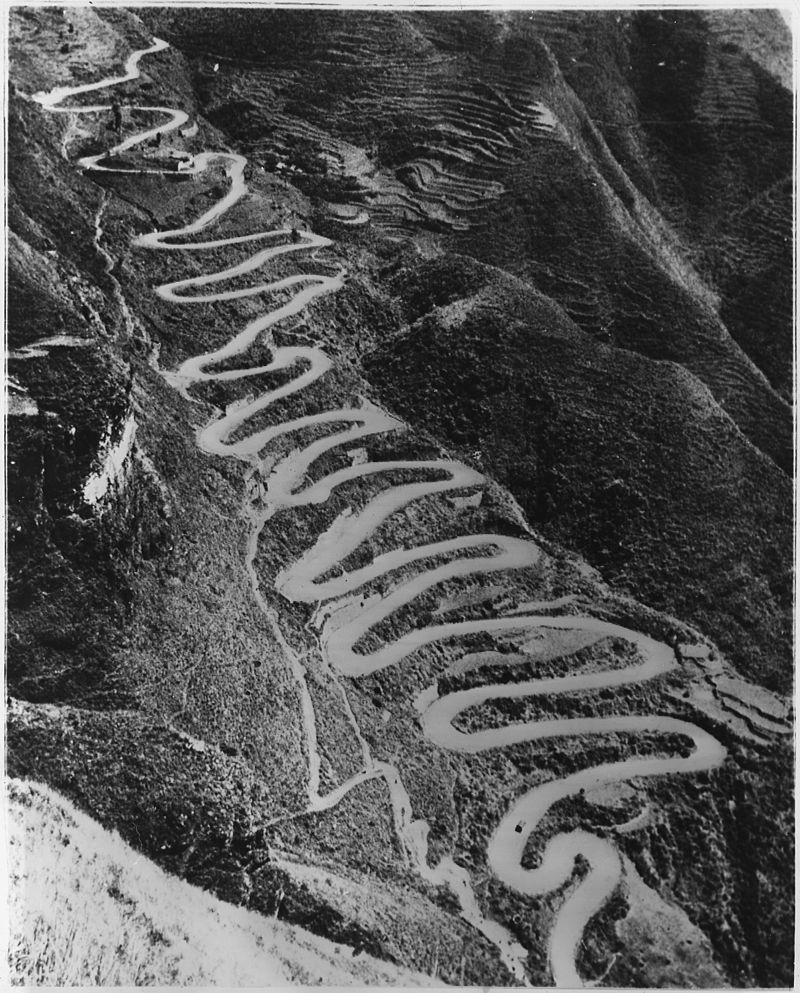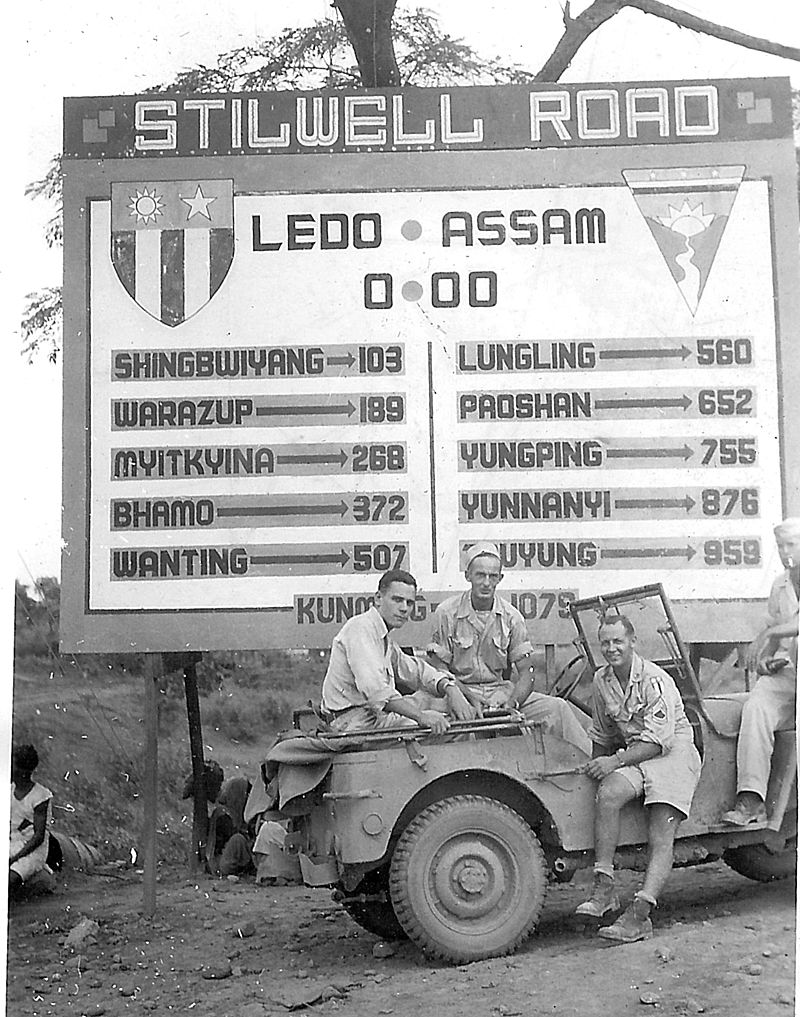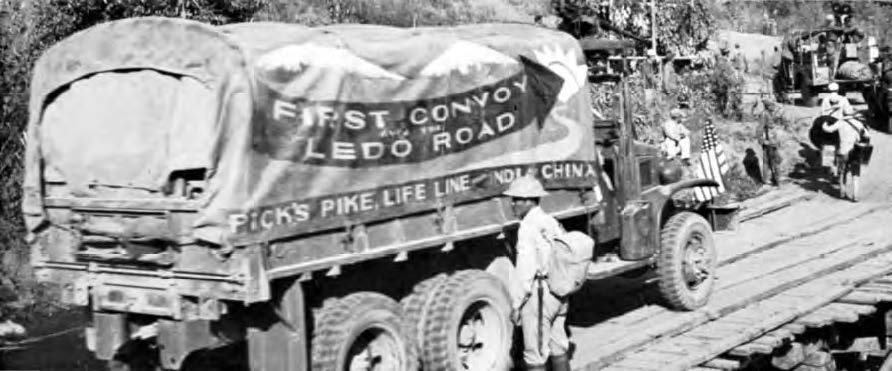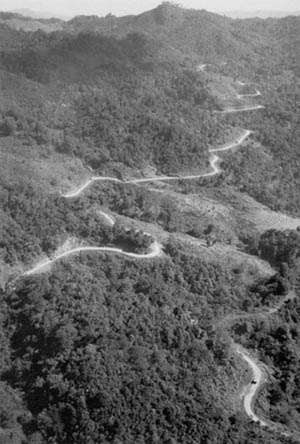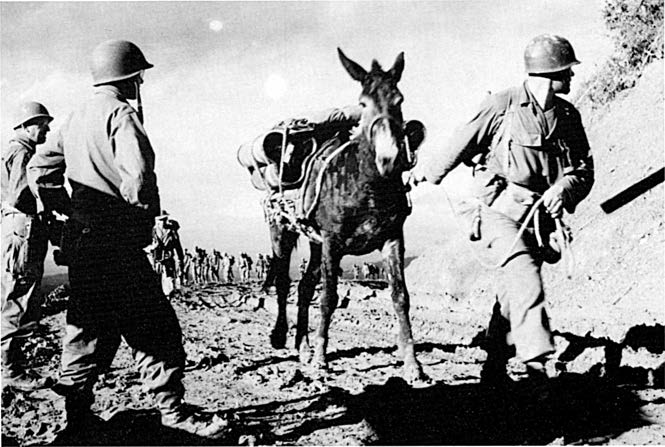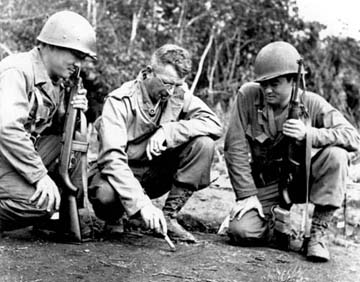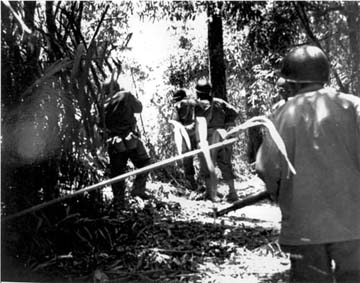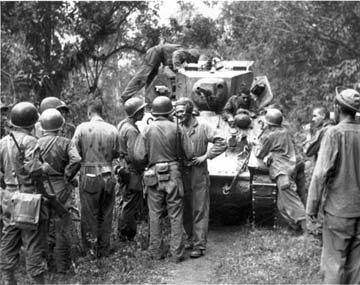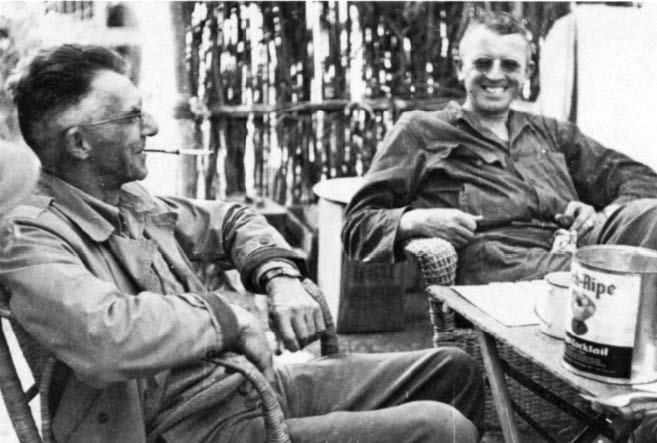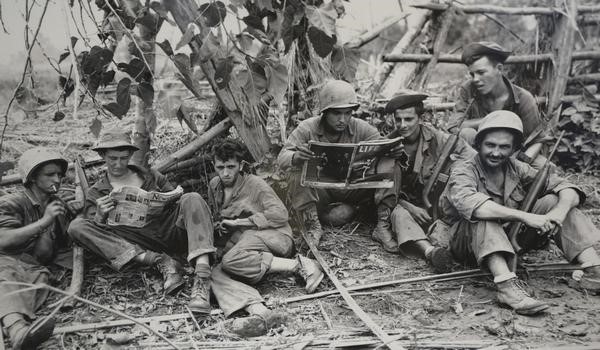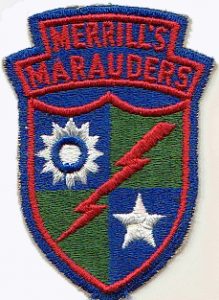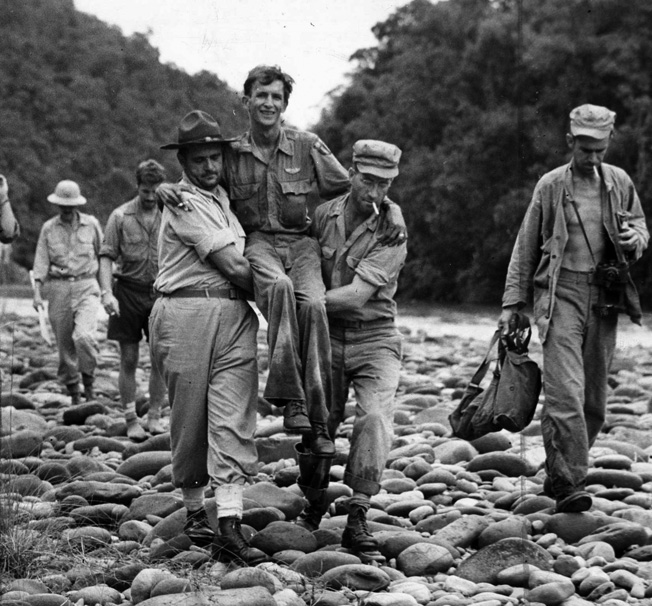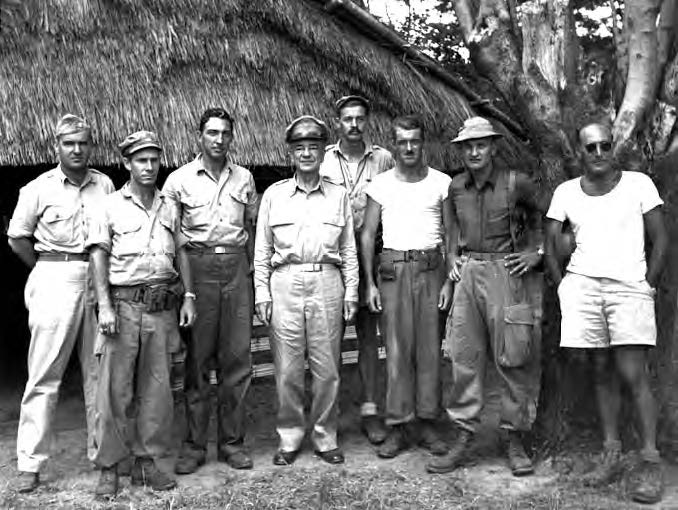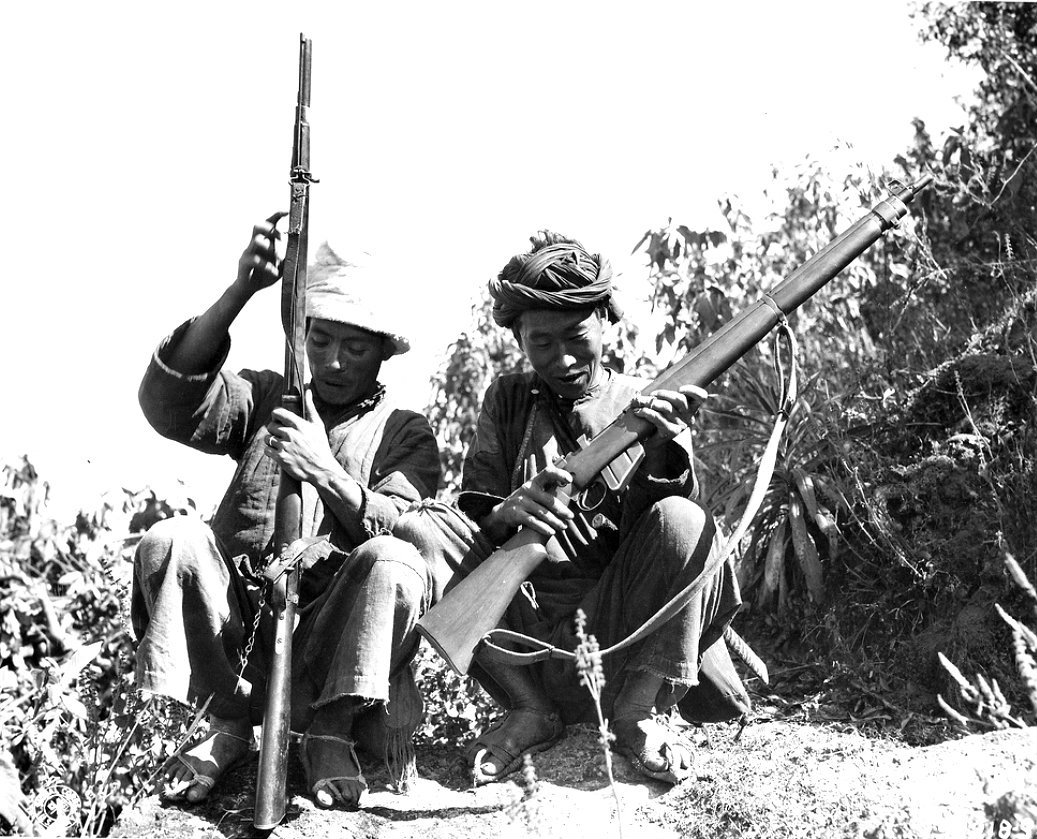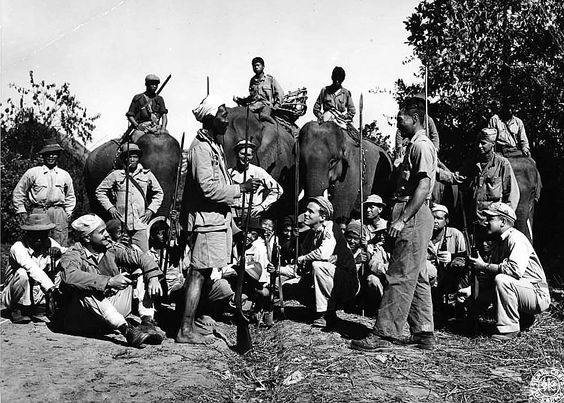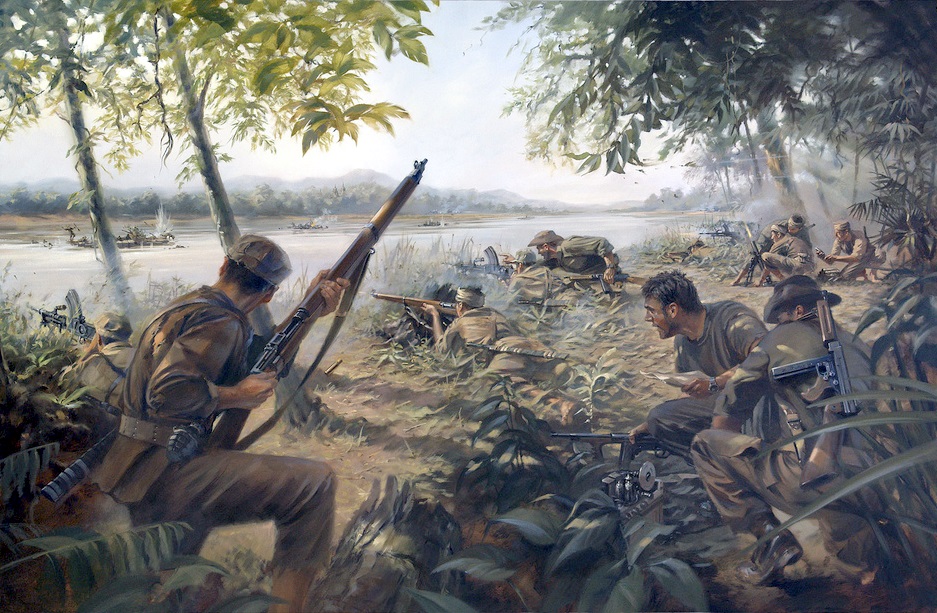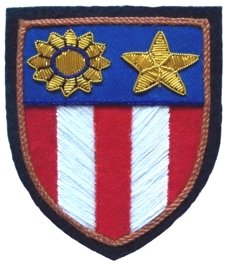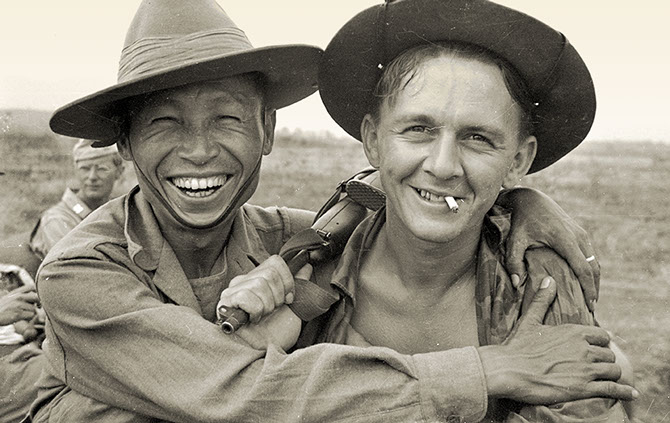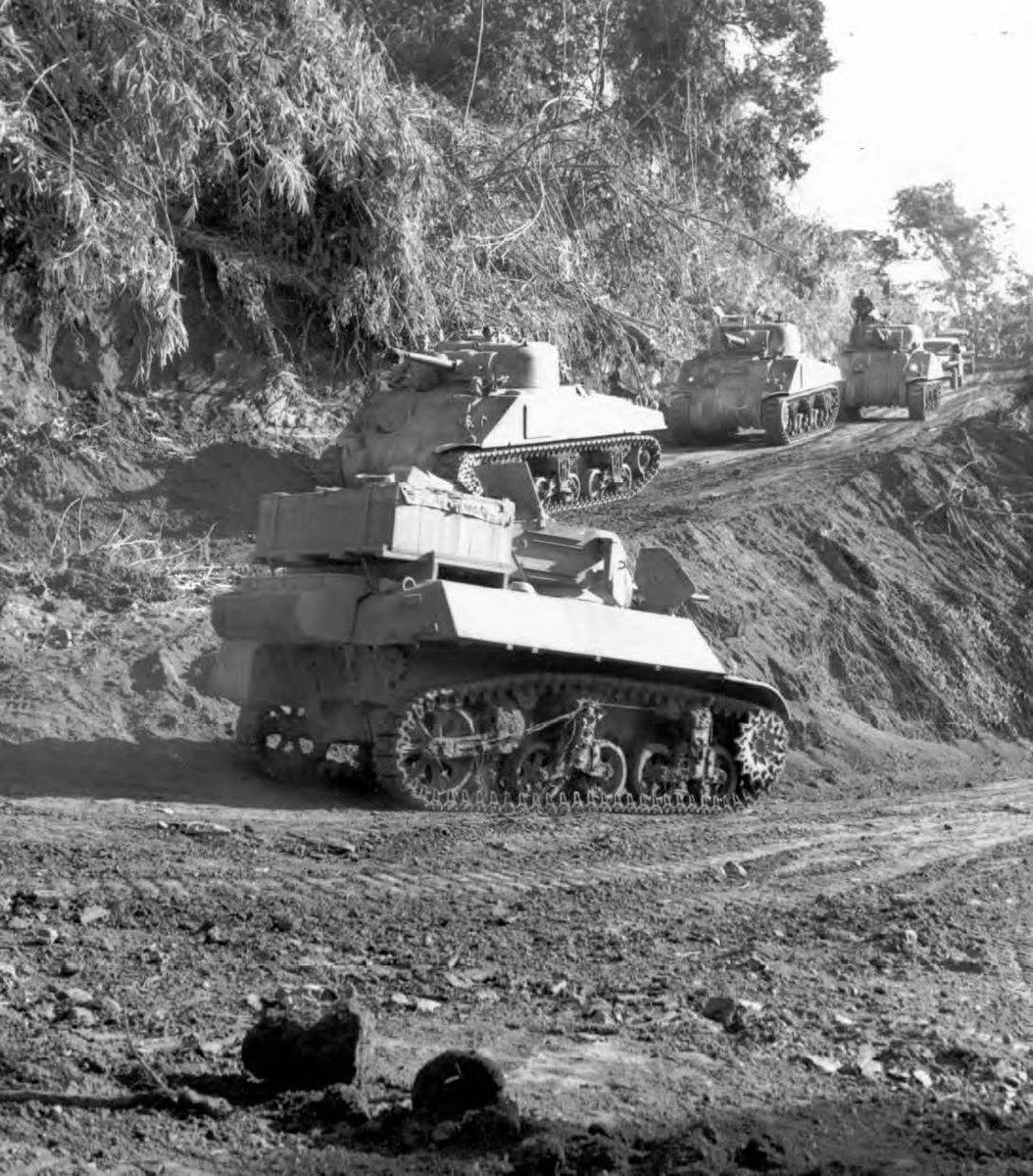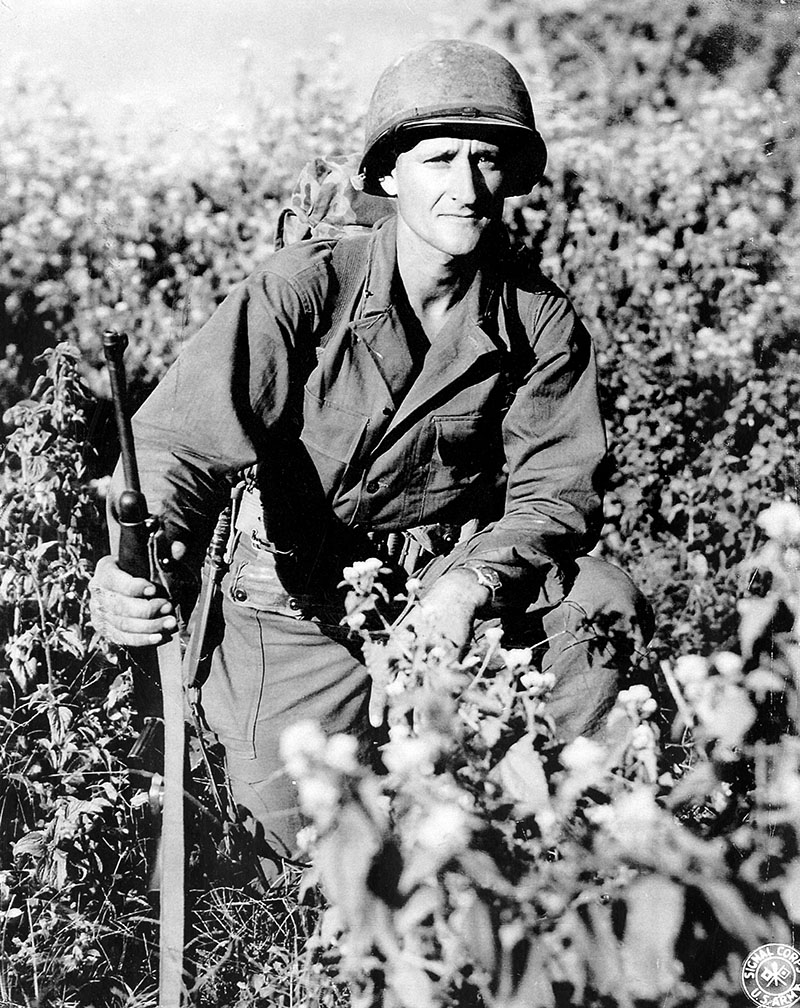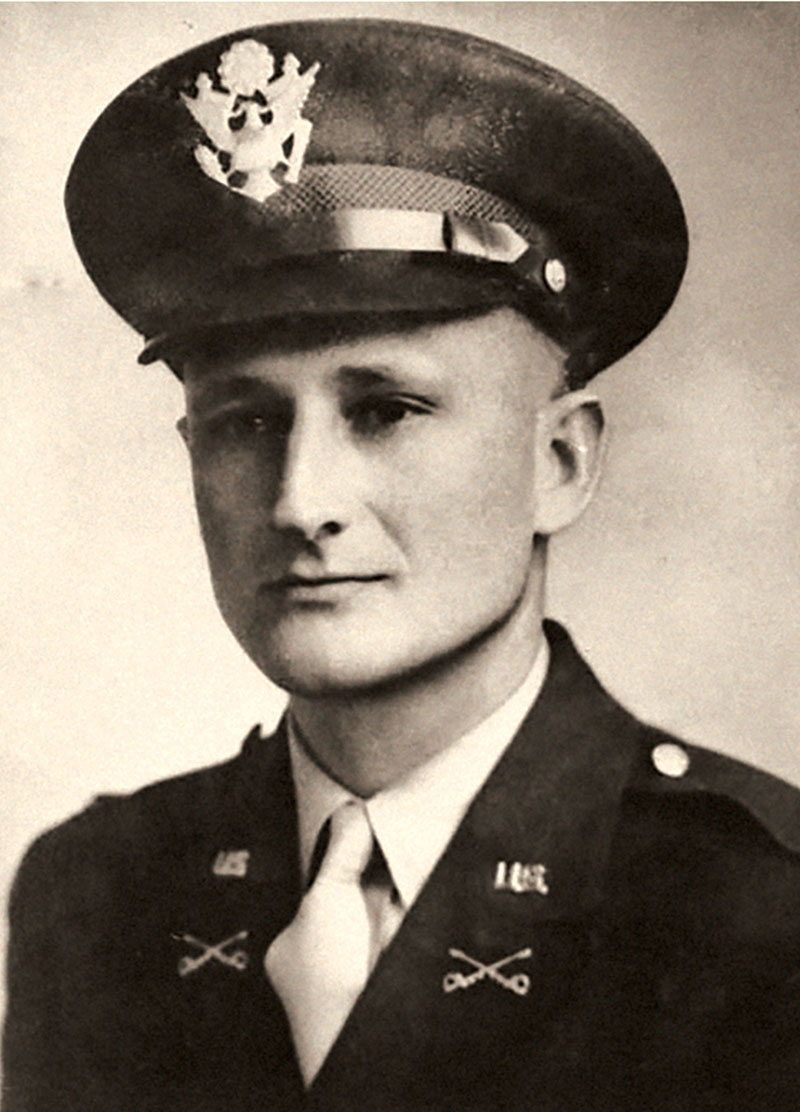EPISODE 5: China, Burma, India Campaign
1 of 32:
This episode will feature the China, Burma India (CBI) Campaign. This less known part of #WWII history played a significant role in the development of @USARMY special operations, logistics and engineering. #WWII75 #MilitaryHistory
1 of 32:
This episode will feature the China, Burma India (CBI) Campaign. This less known part of #WWII history played a significant role in the development of @USARMY special operations, logistics and engineering. #WWII75 #MilitaryHistory
2 of 32:
The India-Burma Campaign began April 1942 with the objective of reopening an overland supply route to China to keep it in the war to tie down Japanese troops and serve as a base for future operations against the Japanese home islands. #WWII75 #militaryhistory
The India-Burma Campaign began April 1942 with the objective of reopening an overland supply route to China to keep it in the war to tie down Japanese troops and serve as a base for future operations against the Japanese home islands. #WWII75 #militaryhistory
3 of 32:
LTG Joseph Stilwell was assigned as chief of staff & adviser to Chinese leader Chiang Kai-shek. After Japan captured Rangoon, Stilwell took command of 2 Chinese divisions, and with British and Indian forces, tried to halt the Japanese onslaught, but was defeated. #WWII
LTG Joseph Stilwell was assigned as chief of staff & adviser to Chinese leader Chiang Kai-shek. After Japan captured Rangoon, Stilwell took command of 2 Chinese divisions, and with British and Indian forces, tried to halt the Japanese onslaught, but was defeated. #WWII
4 of 32:
After the defeat, Stilwell and his staff hiked 140-miles over jungle-covered mountains to India. Stilwell, the commander of US Forces in CBI, took the defeat personally and vowed to retake Burma and re-open the lifeline to China. #WWII75
After the defeat, Stilwell and his staff hiked 140-miles over jungle-covered mountains to India. Stilwell, the commander of US Forces in CBI, took the defeat personally and vowed to retake Burma and re-open the lifeline to China. #WWII75
5 of 32:
“I claim we got a hell of a beating. We got run out of Burma and it is humiliating as hell. I think we ought to find out why it happened and go back and retake it.” Stilwell told reporters in India after his march out of Burma. #WWII75 #militaryhistory
“I claim we got a hell of a beating. We got run out of Burma and it is humiliating as hell. I think we ought to find out why it happened and go back and retake it.” Stilwell told reporters in India after his march out of Burma. #WWII75 #militaryhistory
6 of 32:
U.S. Forces in the China-Burma-India Theater only numbered about 17,000 & consisted mainly of 2 major units. The 10th @usairforce covered both combat & supply missions and the other - The Services of Supply- , responsible for sustainment operations. #WWII75
U.S. Forces in the China-Burma-India Theater only numbered about 17,000 & consisted mainly of 2 major units. The 10th @usairforce covered both combat & supply missions and the other - The Services of Supply- , responsible for sustainment operations. #WWII75
7 of 32:
The focus of operations early on was to improve the Indian infrastructure to support the sustainment demand and to build up the Chinese forces to a level that they could then go on a counter attack in Burma and restore the lifeline that was lost. #WWII75
The focus of operations early on was to improve the Indian infrastructure to support the sustainment demand and to build up the Chinese forces to a level that they could then go on a counter attack in Burma and restore the lifeline that was lost. #WWII75
8 of 32:
With the Burma ports, railway and roads under Japanese control, the mission to supply the Chinese rested solely on the planes of the 10th Air Force who had to cross the perilous Himalayas nicknamed “The Hump” to keep the Chinese in the fight. #WWII75
With the Burma ports, railway and roads under Japanese control, the mission to supply the Chinese rested solely on the planes of the 10th Air Force who had to cross the perilous Himalayas nicknamed “The Hump” to keep the Chinese in the fight. #WWII75
9 of 32:
The air supply route, was about 500 miles, from northeast India to Kunming in western China. Cargo transported over the Hump increased from about 10,000 tons a month in the summer of 1943 to approximately 46,000 tons a month by January 1945. #WWII75
The air supply route, was about 500 miles, from northeast India to Kunming in western China. Cargo transported over the Hump increased from about 10,000 tons a month in the summer of 1943 to approximately 46,000 tons a month by January 1945. #WWII75
10 of 32:
The aerial resupply operations improved over time and were vital throughout the CBI campaign, especially for those operating in the dense jungles, but would not be enough to keep the Chinese sustained against the Japanese. #WWII75
The aerial resupply operations improved over time and were vital throughout the CBI campaign, especially for those operating in the dense jungles, but would not be enough to keep the Chinese sustained against the Japanese. #WWII75
11 of 32:
@USACEHQ got to work in late 1942 constructing the “Ledo Road” through India toward the border with Burma. The goal was to link this up with the Allied-controlled portion of the Burma Road in southern China. #WWII75
@USACEHQ got to work in late 1942 constructing the “Ledo Road” through India toward the border with Burma. The goal was to link this up with the Allied-controlled portion of the Burma Road in southern China. #WWII75
12 of 32:
Led by MG Lewis A. Pick, U.S. and Chinese engineer units & local laborers cut the road through dense jungles, over rugged mountains & were hampered by weather and resource priorities, the project was finally completed. #WWII75
Led by MG Lewis A. Pick, U.S. and Chinese engineer units & local laborers cut the road through dense jungles, over rugged mountains & were hampered by weather and resource priorities, the project was finally completed. #WWII75
13 of 32:
"The toughest job ever given to @USArmy Engineers in wartime," said MG Pick. The first convoy from Ledo reached Kunming on 28 January 1945. The new route was named the "Stilwell Road" The CBI commander who insisted on its completion despite the difficulties. #WWII75
"The toughest job ever given to @USArmy Engineers in wartime," said MG Pick. The first convoy from Ledo reached Kunming on 28 January 1945. The new route was named the "Stilwell Road" The CBI commander who insisted on its completion despite the difficulties. #WWII75
14 of 32:
The brunt of combat in CBI was carried by the combined British and Indian forces who engaged in the major battles of the campaign, but two small U.S. units made their impact and laid the ground work for today’s modern U.S. Special Operations @USASOCNews @USSOCOM
The brunt of combat in CBI was carried by the combined British and Indian forces who engaged in the major battles of the campaign, but two small U.S. units made their impact and laid the ground work for today’s modern U.S. Special Operations @USASOCNews @USSOCOM
15 of 32:
By Spring of ‘44, the Allies advanced in Burma, Stilwell’s Chinese divisions pressured the Japanese front & the 5307th Composite Unit, called GALAHAD, AKA "Merrill& #39;s Marauders" for their commander BG Frank Merrill, marched around the enemy’s right flank @USASOCNews
By Spring of ‘44, the Allies advanced in Burma, Stilwell’s Chinese divisions pressured the Japanese front & the 5307th Composite Unit, called GALAHAD, AKA "Merrill& #39;s Marauders" for their commander BG Frank Merrill, marched around the enemy’s right flank @USASOCNews
16 of 32:
Moving through thick jungle mountains, The Marauders built 2 roadblocks on the enemy line of retreat, and dug in at a two nearby villages. The enemy attacked several times, but were stopped by the Marauders& #39; rifle marksmanship, supported by mortars & machine guns #WWII
Moving through thick jungle mountains, The Marauders built 2 roadblocks on the enemy line of retreat, and dug in at a two nearby villages. The enemy attacked several times, but were stopped by the Marauders& #39; rifle marksmanship, supported by mortars & machine guns #WWII
17 of 32:
The Marauders inflicted severe casualties on the enemy, and suffered 200 of their own. Pleased with the performance, Stilwell and Merrill did not want to risk destruction of the only American ground combat unit in theater and they were pulled back
The Marauders inflicted severe casualties on the enemy, and suffered 200 of their own. Pleased with the performance, Stilwell and Merrill did not want to risk destruction of the only American ground combat unit in theater and they were pulled back
18 of 32:
The 5307th was the only U.S. ground combat unit deployed to the CBI. It later became the foundation for the 75th Ranger Regiment. The Rangers carry their lineage, as well as their Distinctive Unit Insignia and motto: "Sua Sponte" - "Of Their Own Accord." #WWII
The 5307th was the only U.S. ground combat unit deployed to the CBI. It later became the foundation for the 75th Ranger Regiment. The Rangers carry their lineage, as well as their Distinctive Unit Insignia and motto: "Sua Sponte" - "Of Their Own Accord." #WWII
19 of 32:
Formed in 1942, OSS Detachment 101 supported Stilwell’s, and later LTG Sultan’s, Northern Combat Area Command as an intelligence-gathering unit and as an organization for assisting in the return of downed
Allied airmen to friendly lines. #WWII75
Formed in 1942, OSS Detachment 101 supported Stilwell’s, and later LTG Sultan’s, Northern Combat Area Command as an intelligence-gathering unit and as an organization for assisting in the return of downed
Allied airmen to friendly lines. #WWII75
20 of 32:
By spring of 1945, however, the 20-man detachment, commanded by Col. William R. Peers, had organized a large partisan force behind enemy lines in northern and central Burma. Reaching a peak strength of nearly 10,000 native Burmese Kachin tribesmen and U.S. volunteers
By spring of 1945, however, the 20-man detachment, commanded by Col. William R. Peers, had organized a large partisan force behind enemy lines in northern and central Burma. Reaching a peak strength of nearly 10,000 native Burmese Kachin tribesmen and U.S. volunteers
21 of 32:
Apr to July 1945, Peers’ guerrilla units drove about 10,000 enemy troops from the region. During that period all of the BNs saw heavy fighting. Most of the enemy encountered were tired and poorly equipped, yet they habitually fought to the last man. #WWII75 @USASOCNews
Apr to July 1945, Peers’ guerrilla units drove about 10,000 enemy troops from the region. During that period all of the BNs saw heavy fighting. Most of the enemy encountered were tired and poorly equipped, yet they habitually fought to the last man. #WWII75 @USASOCNews
22 of 32:
Det 101 eliminated over 5,000 enemy, rescued 300 downed airmen, derailed 9 trains, blew up 56 bridges, destroyed 252 vehicles, and eliminated numerous dumps & other enemy installations. For their performance, they were awarded a Presidential Unit Citation. #WWII75
Det 101 eliminated over 5,000 enemy, rescued 300 downed airmen, derailed 9 trains, blew up 56 bridges, destroyed 252 vehicles, and eliminated numerous dumps & other enemy installations. For their performance, they were awarded a Presidential Unit Citation. #WWII75
23 of 32:
Det. 101, forefathers of @1st_SF_Command , set the template for building a capable indigenous force from scratch. Hallmarks of today’s Special Forces, astute cultural awareness, team building, disciplined initiative and expert warfighters. #WWII75
Det. 101, forefathers of @1st_SF_Command , set the template for building a capable indigenous force from scratch. Hallmarks of today’s Special Forces, astute cultural awareness, team building, disciplined initiative and expert warfighters. #WWII75
24 of 32:
After the completion of the road, the allies focused on pushing through central and southern Burma. Both units would be reorganized and contribute to the final battles of the campaign. #WWII75 #MilitaryHistory
After the completion of the road, the allies focused on pushing through central and southern Burma. Both units would be reorganized and contribute to the final battles of the campaign. #WWII75 #MilitaryHistory
25 of 32:
It was during these final battles that the only Medal of Honor of the campaign would be awarded. #MOH #WWII75 #MilitaryHistory
It was during these final battles that the only Medal of Honor of the campaign would be awarded. #MOH #WWII75 #MilitaryHistory
26 of 32:
In an early operation to secure the newly completed Burma Road, 124th Cavalry @TexasGuard attacked what was thought to be a Japanese battalion entrenched on the hill about a mile northeast of the regiment’s foxholes. #WWII75 #MOH
In an early operation to secure the newly completed Burma Road, 124th Cavalry @TexasGuard attacked what was thought to be a Japanese battalion entrenched on the hill about a mile northeast of the regiment’s foxholes. #WWII75 #MOH
27 of 32:
After artillery & mortar preparation, the 2d Squadron, 124th Cav moved toward the enemy. The F Troop commander, 1LT Jack L. Knight, was well out in front. When he made contact with the enemy, he quickly eliminated 2 positions as he went up and over the hilltop. #MOH
After artillery & mortar preparation, the 2d Squadron, 124th Cav moved toward the enemy. The F Troop commander, 1LT Jack L. Knight, was well out in front. When he made contact with the enemy, he quickly eliminated 2 positions as he went up and over the hilltop. #MOH
28 of 32:
He found a cluster of Japanese emplacements and called up his men and led them in a successful grenade attack on the enemy fortifications. When the Japanese, who seemed to have been surprised, steadied and began inflicting heavy casualties, #WWII75 #MOH
He found a cluster of Japanese emplacements and called up his men and led them in a successful grenade attack on the enemy fortifications. When the Japanese, who seemed to have been surprised, steadied and began inflicting heavy casualties, #WWII75 #MOH
29 of 32:
Knight kept his attack organized and under control. Though half blinded by grenade fragments, bleeding heavily, and having seen his brother Curtis shot down while running to his aid, he fought on until he was killed. For this action, Knight received the #MoH @USArmyCMH
Knight kept his attack organized and under control. Though half blinded by grenade fragments, bleeding heavily, and having seen his brother Curtis shot down while running to his aid, he fought on until he was killed. For this action, Knight received the #MoH @USArmyCMH
30 of 32:
The slow progress in the China offensive, coupled with the gains by MacArthur in the south Pacific, shifted the U.S. strategy toward the Philippines, but operations continued in the CBI until #VJDay. #WWII75 #MilitaryHistory
The slow progress in the China offensive, coupled with the gains by MacArthur in the south Pacific, shifted the U.S. strategy toward the Philippines, but operations continued in the CBI until #VJDay. #WWII75 #MilitaryHistory
31 of 32:
But that does not make the actions and accomplishments of the Soldiers any less significant. Their impact is still being felt today. Logistics, Sustainment and building partner capacity are cornerstones of the USARPAC mission today. #WWII75 #MilitaryHistory
But that does not make the actions and accomplishments of the Soldiers any less significant. Their impact is still being felt today. Logistics, Sustainment and building partner capacity are cornerstones of the USARPAC mission today. #WWII75 #MilitaryHistory
32 of 32:
Thanks again for following our recap of #WWII. The next episode will be posted on Monday and will cover GEN MacArthur’s southwestern push through The Solomon Islands, Papua and New Guinea. #WWII75 Learn even more at @USArmyCMH
Thanks again for following our recap of #WWII. The next episode will be posted on Monday and will cover GEN MacArthur’s southwestern push through The Solomon Islands, Papua and New Guinea. #WWII75 Learn even more at @USArmyCMH

 Read on Twitter
Read on Twitter